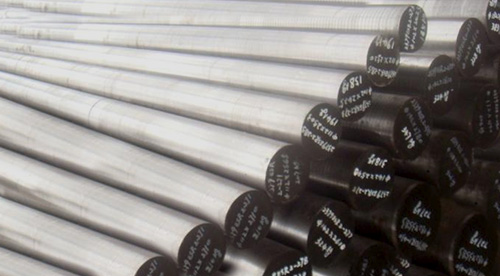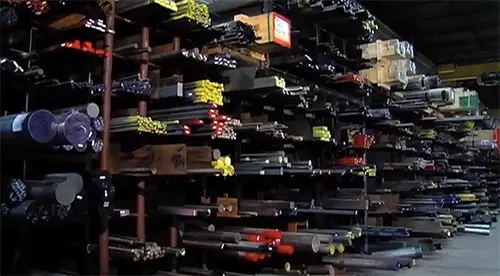
Choosing the best type of steel for your project can be challenging if you do not know what to look for. Most steel types are manufactured differently and some have specific defining characteristics, such as CPM M4 steel, that others do not have.
Steel is one of the most widely used materials for various industrial applications because of its unique properties. Through chemical and mechanical engineering processes, steel manufacturers can produce steel materials with distinct features.
CPM REX M4 steel is one of the most popular types of high speed steel on the market today because of its flexibility and durability. Here’s everything you need to know about CPM Rex M4 steel, from the benefits and heat treatments to applications and maintenance.
What Is CPM M4 Steel?
CPM REX M4 steel is an extremely flexible, durable hss steel that is manufactured to withstand high impacts. It is a good option for a wide variety of applications due to its bend strength. This steel’s tremendous flexibility is due to its fine grain size, superior cleanliness, and small carbide structure.
This steel offers improved performance and extended tool life compared to traditional steel grades or high-speed steels with lower alloy contents. Further, it performs exceptionally well in cold work tooling applications, outperforming high-chromium or high-carbon steels.
What Are the Benefits of CPM REX M4 Steel?
There are many advantages to using high-speed steels such as CPM REX M4. According to its chemical configuration and hardness, CPM REX M4 steel products offer the following benefits:
- Availability: Higher alloy grades of steel like CPM REX M4 cannot be created through traditional steelmaking processes. Even though the production process is somewhat complicated, the durability and the heat resistance of the material makes it a good choice for a wide variety of cutting tool applications. Steels grades such as this represent the substantial progress that has been made in the development of steel products with distinctive characteristics.
- Toughness: High-speed steels have superior toughness and offer unparalleled resistance to breakage. Generally, more hardened steels are lower in toughness. Fortunately, this is not the case with CPM M4. This steel type can be hardened during the manufacturing process without sacrificing toughness.
- Grindability: Unlike other tough steels, CPM products offer better grindability without a significant reduction in the tool’s resistance properties. The grinding process can be completed quickly, providing more safety to the cutter and leaving the device’s edge smoother.
- Consistency: Some steel types are not uniform in how they are produced or the properties they possess. High-speed steels are consistently produced using similar heat treatments, increasing the property uniformity of finished products. This uniformity increases the predictability of the steel. Predictability is an impact factor in many steel applications, such as multi-spindle machines.
- Resistance: These types of steels are hard, providing superior edge retention. This steel is an excellent choice for tools because of its exceptional edge retention capabilities. While high-speed steels’ corrosion resistance properties are not as superior as its edge retention, they are still sufficient for most industrial applications. Further, this steel is very wear-resistant, even in harsh working conditions.
- Machinability: CPM REX M4 steels are made with a high percentage of sulfur, offering exceptional machinability without sacrificing toughness.
What Is the Composition of CPM M4 Steel?

The unique composition of this steel provides hardness, weather resistance, machinability, strength, excellent edge retention and enhanced machinability. Here is a breakdown of the steel’s composition:
- 1.42% carbon
- 4% chromium
- 4% vanadium
- 5.25% molybdenum
- .3% manganese
- .55% silicon
- .03% phosphorous
- .06 sulfur
- 5.5% tungsten
According to many industry sources, the hardness level of this type of steel is 65.5 hot-rolled coil (HRC).
What Heat Treatments Are Used?
Heat treatments are controlled techniques used to change the microstructure of steel products. Steel parts undergo some form of heat treatment to increase hardness, optimize strength and ensure durability. There are many steel heat treatment processes including tempering, quenching, case hardening, carburizing and vacuum techniques.
The performance quality of high-speed steels is dependent on the hardening response achieved during these heating processes. Here is an overview of the treatments most commonly used on these steels to help produce hardness and durability:
Preheating: Without a suitable preheating phase, welding can cause steel with uneven temperatures. In those situations, welding can make the steel brittle and weaker. Performing a preheating treatment can help to minimize distortions and imperfections in steel products. To start, the heat applied should not exceed 400 degrees Fahrenheit per hour. To equalize, do not exceed 1550 degrees Fahrenheit.
Quenching: During a quenching treatment, the steel is heated up and then soaked in oil to fully harden. Pressurized gas and oil are also occasionally used to quench high-speed steels. For pressurized gas, heat at a rate below 1000 degrees Fahrenheit to reach the desired outcome. For oil, quench until the material is black and then cool. Materials that go through this process should then be tempered or aged to attain the appropriate stability levels.
Tempering: After a metal product is hardened by a heating and cooling process, it is often more rigid and more brittle than desired. Tempering the metal can alleviate internal stresses and can help eliminate excessive brittleness. For steels such as this, you should harden immediately after the quenching process is complete. The acceptable tempering heat range is 1000 to 1100 degrees Fahrenheit.
The metal should be held at that temperature for at least two hours and then cooled in still air. Double or even tripling the tempering treatments may be needed to achieve the desired hardness.
Annealing: Annealing is the process of relieving internal stresses, softening the steel, increasing elasticity and improving grain configurations. This process is the opposite of hardening and must be completed immediately after hot working and before hardening techniques.
During this process, heat at a rate from 400 to 1600 degrees Fahrenheit per hour. Hold the steel at this temperature for a minimum of two hours, depending on the material’s thickness. Then cool the material slowly using a furnace. Continue cooling the material in still air until the desired hardness level is achieved.
These are not all of the preheat treatments used on high speed steels. Other techniques may be applied based on the intended use or customer preference.
What Are the Common Applications?
High-speed steels including CPM Rex M4 steel are appropriate for use in a wide variety of industrial applications. It is most commonly used to manufacture industrial tools such as taps, reamers and drill bits. Therefore, the hardness level achieved by the steel during the heat treatment process is central to these tools’ performance.
Even though this type of steel is durable and can withstand extreme working conditions, regular maintenance is key to extending the material’s performance life. Cleaning your tools after each use can extend the device’s life and ensure the next job goes smoothly. Wash your tools with warm water and a mild industrial soap after each use. Let the tools are dry for a minimum of one hour.
CPM M4 Steel For Sale
Griggs Steel has been supplying high-speed steels to the cutting tool and forming tool industries for over six decades. We specialize in providing commercial and government clients with premium materials to help their businesses thrive. Our inventory includes high-speed steels, powder metal steels, rounds, flats and tool bits, among other materials.
